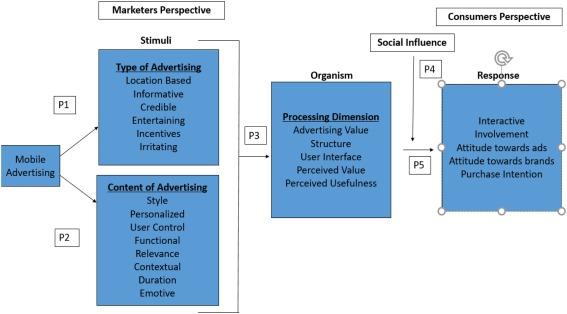Harnessing Big Data: Transforming Educational Strategies for Future Success
As the digital revolution accelerates, education is experiencing a seismic shift. Schools, colleges, and universities are rapidly adopting technology to enhance learning outcomes. At the heart of this change lies big data. Harnessing big data has opened new avenues to optimize educational strategies, personalize student experiences, and better prepare learners for future challenges. In this article, we explore how big data is transforming education and provide actionable insights for educators, administrators, and policymakers.
Understanding Big Data in Education
Big data refers to the vast volume of structured and unstructured data generated every day. In education,big data encompasses everything from attendance records and test scores to digital footprints from learning management systems and online interactions. By systematically analyzing this data, educational institutions can gain invaluable insights into student behavior, academic performance, and institutional effectiveness.
Key Sources of Big Data in Education
- Learning Management Systems (LMS) activity logs
- Online assessments and quizzes
- Student demographic records
- Classroom participation and engagement metrics
- Social media interactions
- Biometric and behavioral data
The Benefits of Harnessing Big Data in Education
Integrating big data into educational strategies yields a wide range of benefits that enhance both teaching effectiveness and student achievements. Here are some of the most significant advantages:
1. Personalized learning Paths
-
Analyzing individual learning data enables educators to tailor lesson plans and resources to each student’s strengths and weaknesses.
-
Adaptive learning technologies use real-time data to adjust content difficulty and pacing, catering to diverse learning speeds.
2. Early Identification of At-Risk Students
-
Predictive analytics can flag students who are struggling academically or disengaging, allowing timely interventions.
-
Automated alerts and dashboards empower teachers to monitor student progress more effectively.
3. Informed Decision-Making
-
Administrators can leverage comprehensive data analysis for resource allocation, curriculum improvements, and staffing.
-
Real-time feedback enables quicker adjustments to teaching strategies and administrative policies.
4. Enhanced Collaboration and Communication
-
Centralized data platforms streamline communication among teachers, parents, and students, fostering a more supportive learning environment.
-
Data-driven insights encourage collaboration across departments and institutions.
5. Improved Student Outcomes
-
Data-centric strategies have been linked to higher student achievement, better graduation rates, and greater engagement.
-
Continuous monitoring supports lifelong learning and skills advancement.
real-World Case Studies: Big Data Successes in Education
many pioneering institutions have already reaped the rewards of integrating big data into their educational practices. Let’s look at a few compelling examples:
georgia State University: Student Success through Predictive Analytics
Georgia State University implemented a predictive analytics system analyzing over 800 risk factors to identify students at risk of dropping out. By intervening proactively—offering tutoring,financial guidance,or advising—GSU increased graduation rates substantially and closed the achievement gap among minority students.
Khan Academy: Personalizing Digital Learning
As a heavyweight in the world of e-learning, Khan Academy uses big data to personalize coursework for millions of learners worldwide. Their adaptive algorithms recommend videos and exercises based on user performance, ensuring students master each topic before progressing.
University of New England: Improving Feedback with Analytics
The University of New England used big data platforms to analyze student engagement with online course materials. By identifying patterns of inactivity, instructors could contact students at risk and improve completion rates through personalized support.
Practical Tips: How to Effectively Harness Big Data in Education
For institutions looking to leverage big data to transform educational strategies, consider the following practical steps:
- Start with Clear Objectives: Define what you aim to achieve—improving retention, personalizing learning, or optimizing resources.
- Invest in the Right Technology: Implement robust Learning Management Systems (LMS), analytics tools, and secure data storage solutions.
- Train Staff and Faculty: Offer professional development to ensure teachers and administrative staff can interpret and act on data insights.
- Prioritize Data Privacy and Security: Comply with regulations like FERPA and GDPR, and regularly audit data usage policies.
- Encourage a Culture of Collaboration: Foster interdisciplinary teams to analyze, share, and act on data intelligence.
- Monitor and Iterate: Continuously assess the outcomes of data-driven strategies and refine them based on new insights.
Overcoming Challenges in Utilizing big Data
Despite its promise, integrating big data into education presents unique challenges. Here’s how institutions can address some common obstacles:
Ensuring Data Quality
- Create standardized protocols for data entry
- Regularly clean and validate data sets
Protecting Student Privacy
- Adopt end-to-end encryption and anonymization techniques
- Educate staff and students about data use and consent
Bridging the Skills Gap
- Invest in upskilling educators in data analysis and interpretation
- Recruit or consult with data science experts
Big Data and the Future of Education
The role of big data in shaping the future of education cannot be overstated. As artificial intelligence, machine learning, and analytics technologies evolve, educational strategies will become more adaptive, inclusive, and effective. Future trends in harnessing big data for education include:
- AI-Powered Personalized Learning: Advanced algorithms will deliver real-time feedback, driving deeper engagement.
- Holistic Student Profiling: Incorporating data from extracurricular activities, social-emotional assessments, and more for a 360-degree view of each learner.
- Evidence-Based Policymaking: Policymakers will use large-scale data analysis to inform educational reforms and investments.
- Global Collaboration: Shared data resources will support research, resource distribution, and the sharing of best practices across borders.
Conclusion: Embracing Big Data for Educational Excellence
Harnessing big data has already begun to transform educational strategies, offering a powerful pathway to maximize student success and institutional effectiveness. By leveraging data-driven insights, educators and administrators can personalize learning experiences, intervene early to support at-risk students, and make informed decisions that shape the future of education. For educational leaders ready to embrace innovation, integrating big data is not just an opportunity—it’s an imperative for fostering a learning environment geared toward the demands of the 21st-century world.
Ready to take the next step? Embrace big data and watch your educational strategies soar. For further reading, explore our resources on educational technology, data privacy, and future-ready teaching practices.

